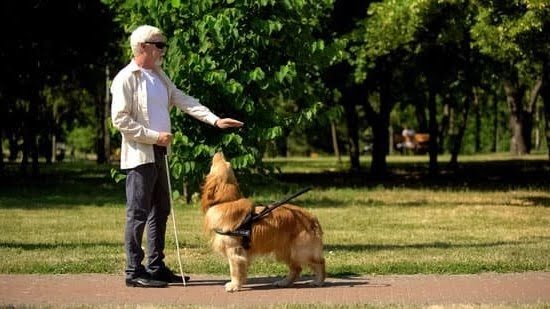Introduction
K9 dogs are increasingly being recognized in the public sphere as an important tool for law enforcement and search and rescue teams. Working with a willing dog, these organizations are able to employ their highly-developed sense of smell and hearing to aid in these essential services. But before they’re ready for such challenging tasks, K9s must go through a rigorous training process which begins long before they are ever integrated into the workforce. So when do K9 dogs start their training?
K9 training typically begins when the puppies are 8 weeks old and at least partially weaned from their mother’s milk. At this age, puppies are eager to learn new behaviors and have more energy than adult dogs, making them ideal candidates for professional training. A responsible breeder will begin socializing puppies early on by introducing them to different people, sounds, environments, scents, and feelings such as pressure or vibration on the pup’s body (e.g., brushing against of furniture). This type of exposure helps prepare puppies for later life in service roles.
When it comes to formal K9 training programs, many organizations specific to working dogs only take puppies that are 6 months old or older. During this time in a puppy’s development, there is an enormous amount of mental and physical growth taking place every day; therefore when selecting a pup for service work it is best if it has had appropriate socialization experiences during early development so that any future role is less stressful on the animal. Throughout the initial period of training with professional trainers, commands should be reinforced consistently so that they stick in the puppy’s mind – repetition is key!
The challenges associated with K9 training come mainly from teaching an animal behavior that is unnatural to it’s species—such as following very specific commands—as well as introducing situations which may scare or trigger fear responses in puppies who haven’t been adequately socialized prior to professionalization. But with early habituation towards unfamiliar environments together with positive reinforcement techniques used during formal schooling periods – K9s can become powerful partners who can help us provide invaluable public services with accuracy and effectiveness!
Different Types of K9 Training
K9s are most often trained for tasks such as detection of drugs, explosives, human remains and equally important, public protection work. Depending on the type of training needed, there are a range of approaches that can be used.
Detection training typically involves pair-based exercises for explosive ordinance detection (EOD) or narcotics detection (ND). The K9s learn how to detect a particular scent in an incorporated sense of play so that they associate the task with pleasure. This approach uses rewards-based techniques to promote desired behaviors and discourage others.
Public protection training is more socialization-focused with the purpose of developing the handler’s trust in their K9 partner and enabling them to lead confidently when out in public or participating in events or shows. Examples of key drills include bite work on Non-BitingItems (NBITs), barking disciplines, tracking skills, aggressive surface navigation and prey drive stimulation/control.
Search and rescue operations teach the K9s to detect human remains by following a basic termite search technique utilizing air scenting for area searches as well as detailed searches for specific items. A reward-based approach is generally adopted here too, where the K9 is trained to target its behavioral response based on positive feedback from maneuvers completed successfully.
Overall, each type of training consists of its own set of handling goals focused on creating desirable behaviors depending on the objective. Utilizing various reward systems – together with an integrated mix that focuses on play within each exercise – provides a successful strategy for efficient path to achieve optimal results from K9 teams.
The Timeline of K9 Training
The timeline of K9 Training typically follows a set format for each breed. Most dogs will start their basic obedience and socialization training at the age of 4 to 6 months, depending on size and breed. This training should last anywhere from two or three months, or up to six or eight months for sporting breeds.
Once basic obedience is established and the dog is confident, they usually begin more specialized tasks, such as scent detection, drug detection and search-and-rescue. Depending on the type of job they are being prepared for, these types of jobs could start anywhere from 6 to 18 months old. Typically it will take between 6 to 8 weeks in an intensive environment to teach the dog these skills.
Not all K9s socialize with humans in the same way either; some may start this process earlier than others, ranging from 8 weeks to 12 months old depending on individual needs . For more aggressive breeds (including police dogs) very early socialization aids in building confidence, trust and understanding for later training experiences as well. Exceptions can also happen if a K9 handler has prior experience working with other dogs – some programs may speed up the timeline for specific tasks if the handler has demonstrated mastery over them before. Overall however, most K9s need about 10-18 months of dedicated coaching before they are considered competent pupils with sufficient basic training and specialized tasking capabilities.
Age and Breed Considerations
K9 dogs start their training at different ages depending on the breed and purpose of the K9. Generally, puppies begin basic obedience and socialization training between 8-12 weeks old in order to get an early start on learning appropriate behaviors. However, breeds such as German Shepherds may not be suitable for introduction to more serious training until they are about a year old due to the physical demands placed on them by more advanced techniques. Dogs bred for a specific purpose such as protection, drug detection, search and rescue, or tracking might begin specialized training sooner than those bred for less demanding roles like companionship or agility. Some trainers believe that introducing certain elements of obedience work before 12 weeks can interfere with developmental processes in puppies and this should be taken into consideration when discussing timing of formal training sessions. Ultimately it is up to the K9 program team or individual trainer to decide when they feel comfortable progressing with each dog based on factors such as age, breed, and purpose.
Assessing K9s Before Training
K9 trainers assess each dog before a training program can begin. This pre-evaluation process allows the trainer to determine the individual needs of each K9 before developing a training plan. The assessment involves getting to know the dog’s temperament, physical capabilities, mental readiness, strengths and weaknesses. The trainer will check for potential fears or behavioral issues that may need special attention throughout the training program while also taking note of which activities they enjoy and excel at. Evaluations like these are critical as they provide an accurate foundation for creating an effective and beneficial program tailored to each individual K9. Trainers will typically ask questions about the dog’s age, breed, experience level, history and more in order to gain insight into their abilities and aptitude when it comes to learning new behaviors or commands. They may also test for basic skills such as obedience, agility or tracking. Ultimately, the goal is to identify problem areas so that specific exercises or activities can be tailored to achieve success from day one of their training program.
Training Strategies
Trainers typically use positive reinforcement strategies when training K9 dogs. These strategies reward the dog for performing a desired behavior and include verbal praise, food rewards, petting, and play. The main principles of positive reinforcement involve recognizing the dog’s response with a secondary reward (such as the food or petting) after the animal performs a certain behavior. This causes them to desire to repeat that same behavior in order to acquire more praise or rewards.
Additionally, trainers seek to work with the dogs on basic commands such as come, sit, stay, heel and no. These commands are meant to give handlers control over their animals during stressful situations such as police searches out in public or inside of private residences. Trainers will use positive reinforcement methods throughout the training process in order to instill these commands into their K9’s effectively, while at the same time building trust and respect between the two.
K9s usually begin their training at 8 weeks old; however, this can be pushed back depending on availability of resources and or local regulations. Generally speaking though puppies should start their structured training around this age to ensure proper socialization with other people/animals as well as obedience instruction. Older K9s can also begin training if they were not given any prior; although it may take them longer since they are older and have already developed some behaviors that need correction.
Training Tips
1. Start early. K9 training should begin as soon as possible, before the puppy reaches six months of age. This provides them with an early start to learn commands and proper behavior in order to become reliable working dogs later in life.
2. Make sure your puppy is comfortable and secure in their environment. When introducing new concepts, equipment, or topics, ensure they feel safe and secure so they can absorb what they need to without becoming frightened or overwhelmed.
3. Set realistic expectations according to the individual personality and needs of your dog. It’s essential that you are aware of their strengths and weaknesses when teaching so each session is productive rather than frustrating for both handler and dog day in and day out.
4. Incorporate positive reinforcement techniques whenever possible throughout your training sessions to promote desired behaviors while reducing anxious or unruly responses from the dog. This could include treats, toys, verbal or physical praise, etc., depending on your individual preferences/habits with your pup.
5 .Ensure consistency between other family members who care for the pup so that all commands are given in a clear manner that reflects upon proper respect for the dog’s boundaries/boundary lines by not confusing them with multiple voices giving contradictory orders at once.
Conclusion
K9 dog training typically starts from the moment a puppy is brought home. Training should be consistent and use positive reinforcement to ensure that the pup learns quickly. During this time, basic obedience commands such as sit, stay, come, and heel should be taught. After this early foundation has been established, more intensive training will begin to specialize in areas like scent detection and protection work. This sort of training is conducted by experienced handlers and may involve taking specific courses or enrolling in an accredited law enforcement program. Potential challenges people may encounter when training K9s include finding a certified trainer with experience in the chosen field; ensuring that adequate resources are available to sustain their K9 through the duration of its career; and adhering to laws and regulations involved with owning a K9. Further resources for readers to explore include speaking with certified trainers about their services or programs for dog owners, researching local laws regarding owning a working K9, or seeking out other professionals who can offer advice on various elements of working with a K9.

Welcome to the blog! I am a professional dog trainer and have been working with dogs for many years. In this blog, I will be discussing various topics related to dog training, including tips, tricks, and advice. I hope you find this information helpful and informative. Thanks for reading!





